|
Oops, nearly forgot this is the Big Garden Birdwatch weekend - you've still got time all tomorrow (Sunday 31st), when with 'Sleet and a gentle breeze' forecast, what better to do than sit at a window and count birds? I guess most of us might recognise robins not least from our Xmas cards, but dunnock vs house sparrow? You can see dunnocks (left) are really very pretty, being quite slatey grey with subtler markings generally, while the house sparrow (right) is more in your face. (Click on the photos to enlarge and see the captions)
Just go to the RSPB website here for all you need to know - but you only need to spend an hour. (Personally, I spend my hour and see hardly anything but as soon as my time's up they all arrive so I restart the timer. It's an art, not missing lunch.) By way of a challenge, here's a link to what Izzy Fry of our Young Nature Watch thinks we might see. I went out last Saturday, bright and sunny, hoped to see especially a mistle thrush but no luck. But today - grey, gloomy, drizzly - Andrew Graham, who had the same experience, saw no fewer than 27, yes twenty seven! species of birds up on the concrete road (Ox Drove/Monarch's Way) to the east of the Wylye road from Chilmark. He did see just one Brambling, but also a flock of larks! and lots of others including those famous 'jangling keys' corn buntings (another wonderful scientific name, emberiza calandra), bright yellowhammers getting ready for spring and chaffinches too - maybe refugees from my garden where I've seen none for several years. (Click once on a photo to enlarge and display caption.)
It was our late, lamented Committee member David Rear who suggested this spot, so it's good to have cause to remember him. For Andrew's full account, go to MoreNews but for wildlife sightings, grey is obviously good, at this time of year at any rate! In contrast to a walk in bright sunshine along the Shaftesbury Drove and Ansty Down last Saturday (23 Jan) when I saw very few birds, today’s walk (27 Jan) along the concrete road above Chilmark in damp overcast conditions was much more productive. The stubble fields either side of the track seem to be providing food for good numbers of birds: some in flocks, others in small groups or singletons. Some species, like the finches, buntings and starlings were moving between the hedgerows and the fields. In contrast the skylarks kept to the fields, moving around in loose flocks, occasionally circling high in the sky before settling again. Thrush species kept mostly to the hedgerows, the redwings and fieldfares sometimes more audible than visible, although there were blackbirds and song thrushes as well. (Click once on a photo to enlarge and read the caption.) Good numbers of corn buntings were very evident, their jangling keys song being clearly heard (here's a video I took in sunnier days, at Win Green - or just try Googling. Ed). Some were using the sapling Walnuts along the track as song posts. These rather dull looking birds far outnumbered the brighter Yellowhammers the males of which look very striking as they come into their spring plumage.
 After four years the flowers exploded - how cattle should be grazing After four years the flowers exploded - how cattle should be grazing The key concept that I took away from Neil's talk was that he has moved beyond 'sustainability' to 'regeneration'. We tended to look at the land and think that was how it always was and sustainability would keep it that way, but that's not enough. This 'regenerative' approach was inspired by The Serengeti Rules, the book by Sean B Carrol subsequently made into a film, that explored the discovery that environmentalists today may be able to “upgrade” damaged ecosystems by understanding the rules that govern them. Nature was already doing everything that we needed and for a while we thought we knew better, but now it's becoming evident that's not the case. And regenerative agriculture isn't just an attractive alternative to present methods. If we're to reduce or do without the chemicals which have been so damaging, we have to find substitutes and this may provide them. 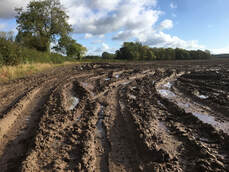 After a wet potato harvest - using metal to cultivate soil is damaging After a wet potato harvest - using metal to cultivate soil is damaging The basic principle is that using metal to cultivate the soil is damaging (we already know of 'no dig' for our gardens and allotments). One alternative is 'Mob grazing' cattle on a small area at a time, with roughly a third of the pasture eaten and the same proportions trampled and left untouched. Neil pointed out that cattle have 'a mower at the front and a muck spreader at the back,' which puts intense pressure on the pasture for a short time but it then dies back and returns carbon to the soil, significantly reducing greenhouse gases from agriculture. The lush green pasture we're used to seeing becomes instead a flower-rich meadow, with butterflies everywhere in summer and noisy with the buzzing of bees. This is known as permaculture, an approach to land management that adopts arrangements observed in flourishing natural ecosystems. The pasture is sown to provide more diversity – the first herbal ley includes chicory with roots that penetrate 8-10 feet down and so help restructure the soil and improve drainage, so is particularly useful for marginal, poorly-draining land. As many as 12-14 different grasses are included, along with clover, sainfoin, horse-shoe vetch and other herbs. Click on the photos to enlarge and see the captions. It is in contrast to monoculture farming, which we've been used to until recently, growing only one type of crop at a time on a specific field. 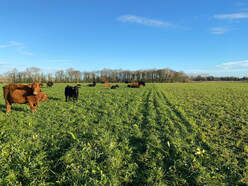 Improved drainage means shorter time in the shed - these cattle are grazing on 15 December Improved drainage means shorter time in the shed - these cattle are grazing on 15 December The other advantage of mob grazing is that better drainage means that cattle can often be out all year round instead of having to be brought in and fed on corn produced with a high level of carbon input. They are also much healthier so need fewer antibiotics, worming only for lungworm (and there are even alternatives for that) because the pasture includes the natural wormer plantain, and sainfoin which is an effective anti-asthmatic. Although the pasture is slightly less productive, because no artificial fertiliser or medications are needed costs are reduced so on balance it is financially beneficial. And that mass of insects we used to see on cow pats but which disappeared with increasing use particularly of wormers, will now be back – and re-joining the food chain! Under the old system, calves would have been brought into the sheds at 7-10 months and fed artificially, becoming prone to disease so requiring antibiotics and vaccinations (although some are still legally required). And what is the logic of growing wheat using fertilisers and other chemicals to feed cattle shut up in sheds, when all they actually need is good quality pasture out of doors?  Neil's Aberdeen Angus Neil's Aberdeen Angus The herds build up naturally - calves stay with their mothers until they are weaned a couple of months before the next birth, and females stay in the herd which now includes probably around five generations including aunts and uncles. After their second winter the steers will come to Tisbury for 'finishing' before slaughter. Some of the meat is sold through the website pastureforlife.org and it is also available at a London butcher. It obtains a premium price because this almost 'wild' beef is produced organically on a single farm (ie 'home bred') and is nearly as rich in eg Omega 3 as fish. This regenerative approach can probably be used not just for beef cattle so some farmers are trying it out for dairy as well, milking just once a day and often selling through farm vending machines. It may also work for poultry and is becoming quite widespread in the US, as it makes good economical use of the land. One of the leaders there is Joel Salatin (polyfacefarms.com). (We have previously been referred to the films Kiss the ground and Living Soil, similarly encouraging as to what can be and is being done 'across the Pond'.) Finally, asked how the new Environmental Land Management System (ELMS) of financial support for agriculture would work, Neil confirmed that regenerative farming complied with its requirements but it would just take time to build up.  Cattle near Tisbury - are they 'organic'? How could we tell? Cattle near Tisbury - are they 'organic'? How could we tell? Just to remind you of the additional online meeting on Thursday, by Neil Hartley about organic farming in Tisbury. This will be a useful follow-on to Peter Thompson's November talk (if you missed this, go to talks/what you missed for a summary and the slides he used). We thought it would be relevant and interesting to hear from a neighbouring farmer on a similar topic. Neil is an experienced farmer from Salisbury Plain who has recently acquired land near the community fields behind the Nadder centre. He will be telling us his exciting plans to bring his organic cattle to Tisbury, about what his farming practice entails and how he manages the impact on wildlife. If you'd like to 'attend' the talk, email [email protected] for the link. All welcome - free to members, £2 for non-members. Hope to see you there! 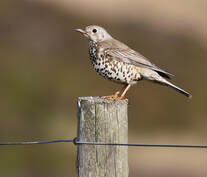 Alun Williams333, CC BY-SA 4.0 httpscreativecommons.orglicensesby-sa4.0, via Wikimedia Commons Turdus_viscivorus_Brych_y_coed Alun Williams333, CC BY-SA 4.0 httpscreativecommons.orglicensesby-sa4.0, via Wikimedia Commons Turdus_viscivorus_Brych_y_coed I don't know why or how, but somehow mistle thrushes have taken on some kind of mystic identity for me. I saw one on Tooting Common once - somehow I knew what it was though little about them. Now, thanks to Andrew Graham, it's our 'bird of the month' on our MoreNews page and I know a lot more. 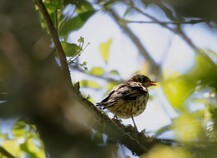 And thanks to Abby Eaton, here's a lovely photo of a fledgling, taken right close to Tisbury. And, thanks again to the wonderful Wikimedia Commons, whence we source a lot of our lovely photos - though our own library is growing apace and contributions are always welcome - an amazing video of a nest in action which you should be able to access via this link. Don't be put off by the orchestral overture, it passes!
Spring is on its way, no matter what the weather throws at us.
Swifts just are the most amazing creatures! We're already determined to do everything we can to support our Tisbury swifts, but Edward Mayer's immense knowledge and contagious enthusiasm has made us even more convinced of the urgent need to do this. He made the point at the outset that these are birds that we humans really can help: find out more about our campaign by searching under Swifts Project in the Categories to the right. Edward told us that their story began around 49m years ago, as fossils looking much like today's swifts are found over much of Europe dating back that far. Humans have been around for 150m years, so we've been enjoying swifts for half our existence. But now, because of us, they are in danger: numbers are down by over 50% in the UK alone, between 1995 and 2015 according to the BTO. We need to do something to stop this, first because swifts provide a very valuable service which certainly contributes to our general well-being. They eat thousands and thousands of insects that would otherwise make our lives a misery or ruin our crops. This is becoming an ever more urgent requirement: at the same time as the swift population declines, global warming is bringing different species of insects from Africa into Europe. Latest arrival in France is the tiger mosquito which carries tropical diseases such as dengue feaver, West Nile virus and chickengunya - treatable but not always curable. But it's the overall decline in insect life eg of 80% between 1981 and 2013 that along with disappearing nest sites that is more of a problem. Most of that is due to the farming practices ie the preference for chemical treatment instead of more sustainable – indeed regenerative – methods which, thankfully, are becoming more widespread (see Peter Thompson's talk on 19 November, summarised below). But the other reason is that without swifts joyfully screaming overhead, our summers especially in our villages, towns and cities, would be miserably silent! Swifts originally nested in very large, old trees and some are still doing this in the Abernethy Forest in Scotland, a nature reserve that includes remnants of the ancient Caledonian Forest, and also in the ancient Bialoweza Forest on the Poland-Belorus border. But now they're mainly urban birds – so much so that the German word for swift is Mauersegler which means wall-sailor. Our swifts make a return journey of 14,000 miles to South East Africa and back, every single year, at an altitude of around 8000 feet and taking just 16 days each way. It is their construction that makes this possible and for almost every aspect of their lives to be carried out in mid-air, from grooming to mating – and it's been studied by scientists designing modern aircraft. Their wings rotate at the base - this gives them extraordinary agility as in this video which we posted before the talk. This inspired the design of swing-wing planes including the F111 fighter jet. Hummingbirds have this same feature, which enables them to hover, and they are descended from the same prehistoric ancestor. Swifts' wings are also extremely thin and this 'high aspect ratio' provides exceptional 'fuel economy'. It means they can fly for four days across the Gulf of Guinea in West Africa without food – no insects over water – or drink. And it's this same feature that makes the Dreamliner popular with the airlines! Swifts always return to the same nest site and if they find this closed or disappeared, they won't breed that year. The destruction of nests is a major factor in the decline in swift populations – down by 57% in Europe between 1995 and 2017. But if such work is essential, information on how to preserve the colony is given in the Swift Conservation leaflets. Nor will they breed if they've been short of food on the way, or have met unseasonably cold weather – this happened last year in Greece. But if the nest site is safe they can continue to breed for up to 20 years, beginning when they're three years old ie have successfully completed their migration three times.  Photo: Elizabeth Forbes Photo: Elizabeth Forbes Often, swifts nest in a minute opening at the top of stone- or brickwork with enough space on a flat surface behind – this is the entrance to the nest on my house. Nests aren't luxurious, just whatever swifts can catch in the sky – bits of grass, feathers etc The sexes migrate separately, but the sooner they get back to the nest site and start fattening themselves up the better, because the young only leave the nest when fully fledged, and this takes around 6 weeks. I did once witness one fledging from the nest on my house and I'll never forget it. I'd been observing the little white face peeping out, and one evening it launched itself out with a sharp clap of wings, and was gone. 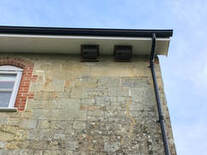 Swift numbers are in swift (!) decline in the UK partly due to lack of nesting sites - they traditionally nested in holes under the eaves of houses and now that houses have been upgraded and modernised they no longer have access to suitable nesting places. Swifts arrive from Africa at the end of April or beginning of May and leave again in August. They feed, mate and sleep on the wing and only land to nest. Tisbury Natural History Society has paid for two woodcrete nest boxes for swifts which have now been erected on the west side of the Brewery building under the eaves overlooking St John’s churchyard. They were put there after permission was granted by David Smale who is the representative of the residents' association. We hope to find someone living in the Brewery near the boxes willing to have a DVD playing swift calls as this may encourage the birds returning in Spring to use our boxes. If you are aware of swifts nesting anywhere in Tisbury, please let us know - see Contacts page. Meanwhile, take a few minutes to enjoy this delightful video about swifts from Gloria Molina, a swift activist in Segovia in Spain. Just click on the link (there is a translation into English): MANTRA DEL VENCEJO The British Trust for Ornithology has published a book about our summer migrants - Flightlines, by Mike Toms, available from the BTO at https://app.bto.org/btos/product/viewProduct.htmlx?id=0b5e04965d7f8a29015e3cd7dd870101 If you know of any other projects the Society might undertake, please do get in touch.
We are so fortunate to have the magnificent Messums gallery in Tisbury, but with the gallery closed for Lockdown throughout January and February, Messums is hosting a weekly series of discussions on the theme, 'Active environmentalism'. The talks are on Wednesday evenings at 6.30 pm and this week Ben Goldsmith will be discussing rewilding and the environment.
Each talk is approximately 30-40 minutes long followed by discussions and questions are welcome in advance to help build the conversation. Full details on Messums website, here. You can join for one talk priced at £10 or take up Online Membership for the entire year and attend as many as you would like. Membership includes an archive of Digital content to catch up on these and other recorded talks as well as online video and research. They explain that this 'marks the transition from protest to participation. It is a recognition that knowledge is better shared and that when informed our innate moral compasses are all the guide we need. These consecutive discussions that take us from the sea though land and air towards a consideration on the future.' Talks so far have been by Oliver Steeds, on his mission to genome the ocean; and 'Future ancestor,' an interview with Dr Christian Thompson.  Mistle thrush (turdus viscivorus) Alun Williams333, CC BY-SA 4.0 httpscreativecommons.orglicensesby-sa4.0, via Wikimedia Commons Mistle thrush (turdus viscivorus) Alun Williams333, CC BY-SA 4.0 httpscreativecommons.orglicensesby-sa4.0, via Wikimedia Commons In February's Focus, Andrew Graham homes in on one of our native birds, the mistle thrush: 'As the winter days lengthen, anticipating the breeding season, birds start to sing again. Echoing through countryside and woodland, the song of the male mistle thrush is melodious and distinctive. While the tone resembles that of the blackbird or song thrush, its repertoire is less varied with a slower delivery. However, compared to its relatives, the mistle thrush's song is much louder, often audible up to 2 km away. The song is given from a treetop or other elevated position mainly from November to early June. The male is most vocal in the early morning, and its tendency to sing after, and sometimes during, wet and windy weather led to the old name - stormcock. 'Its commoner name is probably derived from its love of mistletoe berries, on which it feeds voraciously given the chance: its scientific name, Turdus viscivorus, means mistletoe-eating thrush. In turn, it helps the mistletoe - a parasitic plant that grows on tree bark fissures - by unintentionally “sowing” seeds when wiping its bill on tree bark to remove the berries’ sticky residue or by excreting seeds onto the limbs of the parasitised tree as it feeds. This might explain why trees with mistletoe are often so smothered in the stuff. The more it grows, the more seeds get deposited on the bark by feeding birds.' On that basis, there's a tree in Dinton on the left hand side of the road going towards Salisbury which it would be well worth staking out as it's covered in mistletoe - and it's great to know how this might have come about.  Abby Eaton took this lovely photo of one in a tree on the corner of Hillground Copse, the woodland just SSW of Fonthill Lake, so well worth watching out round there. The nearest footpath runs up from the river over Lady Down to Ridge/the Lake so take your binoculars. 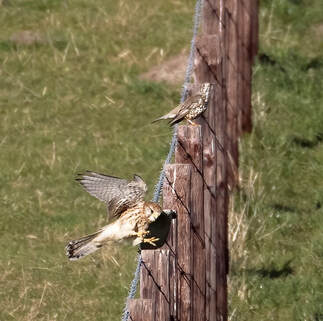 But she also caught the close encounter with a kestrel down near Messums! Abby says that 'they hate having anything else in 'their' tree. They shrieked at the redwings, blackbirds and other small flock birds who had the audacity to land on any of their branches. Relentless squawking the whole time I was there. I left them to it.' This must be what the BTO terms 'resource guarding', which is 'when one or sometimes two birds defend a food source, such as a holly or yew. This is defended against all-comers, the vigilant bird trying to ensure that food resources are maintained for itself throughout the winter. It has been shown that resource guarding birds have bigger and earlier clutches than birds that do not do it.' Andrew continues: 'The largest thrush species in the UK, the mistle thrush measures around 28cm in length. It has greyish-brown upperparts, a long tail, and a plump white belly with heavy, dark brown spots. Its legs are yellow brown in colour, and it is an altogether stockier and more grey-looking bird than the song thrush. Male and female have the same plumage. In contrast to the song thrush, it is more likely to be seen feeding out in the open, hopping with its body erect and head held high, then standing upright and bold. In flight, it usually flies at tree top height with several wing beats separated by short glides. 'The underside of the wings is white. This helps to distinguish it from the smaller redwing and song thrush which have red and buff underwings, respectively. The fieldfare which is slightly smaller than the mistle thrush has a quite different “chack chack” call, a less undulating flight and is only seen hereabouts in winter.
'As well as mistletoe berries, this thrush eats other berries, seeds, and fruit, as well as worms and insects. It is fiercely territorial when it comes to food and will vigorously defend the holly bush or yew tree on which is feeding. Its warning call is a sharp chattering noise which sounds most like a wooden football rattle (if anyone still uses these?). 'Mistle thrushes usually breed from February to May, with the female building a big, messy, grass-lined nest in the fork of a tree.' (Go to this link on Wikimedia Commons, from which many of our photos are sourced, for an amazing video of a nest with adults feeding young, and the young fledging. Bear with the orchestral prelude, the birdsong begins at about 40secs!) The chaffinch often nests close to a mistle thrush, the vigilance of the chaffinch and the aggressive behaviour of the thrush benefiting both species. 'Unfortunately, mistle thrush populations in the UK have been in decline since the 1970s especially in farmland areas. But they are widespread across the UK and rarely migrate. They are absent from some Scottish isles and areas of extremely high, bare ground.' |
Photo: Avocets (Izzy Fry)
The headers display photos taken by our members. Do get in touch via the Contact Form if you'd like to submit a photo for selection.
Archives
May 2024
Categories
All
|



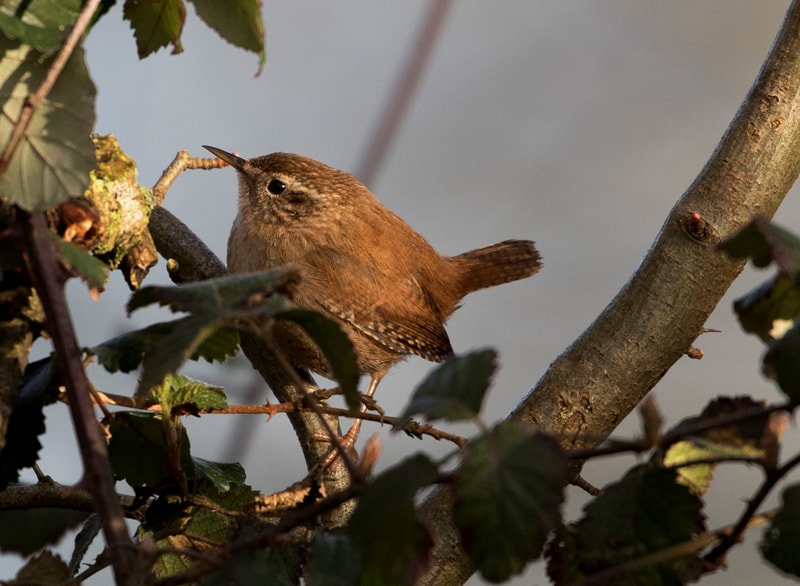




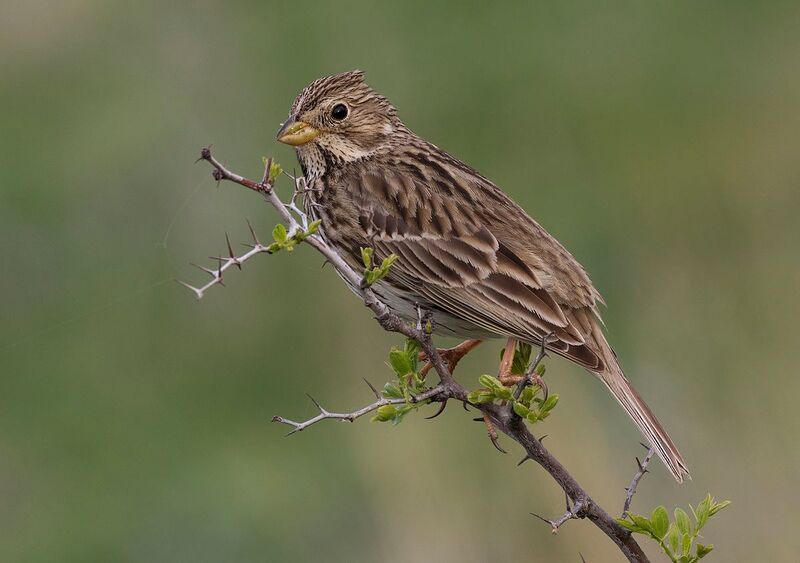
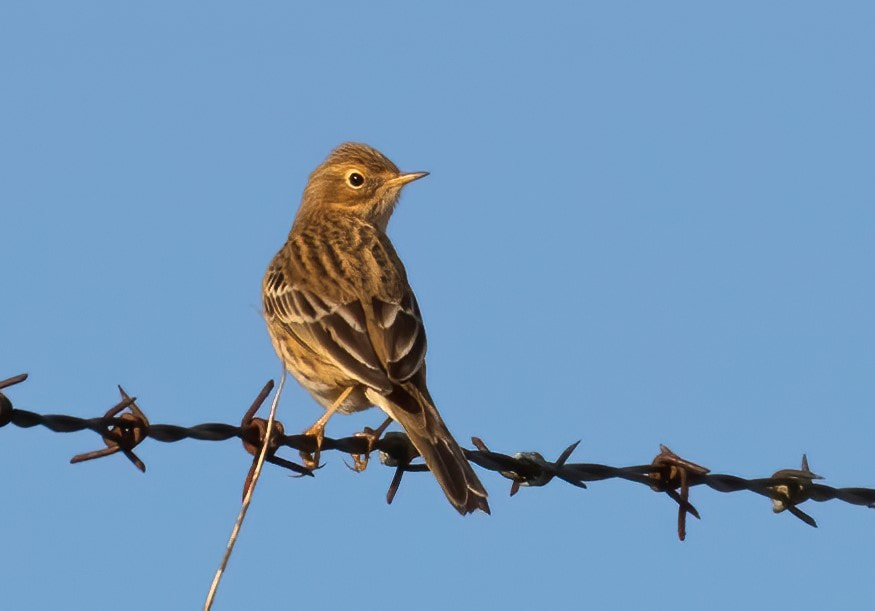
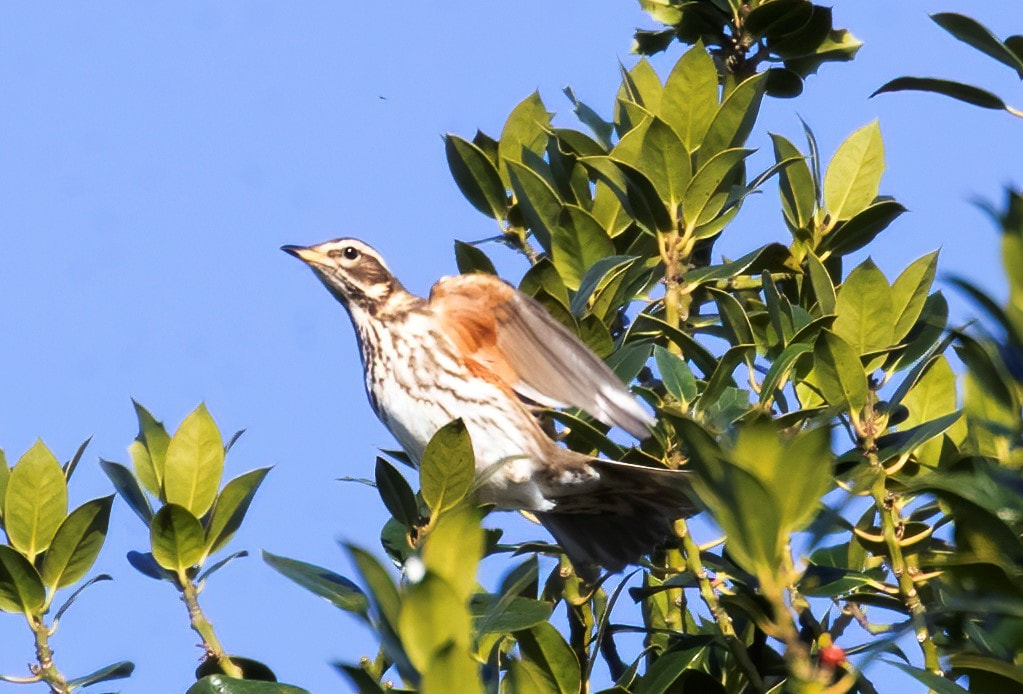
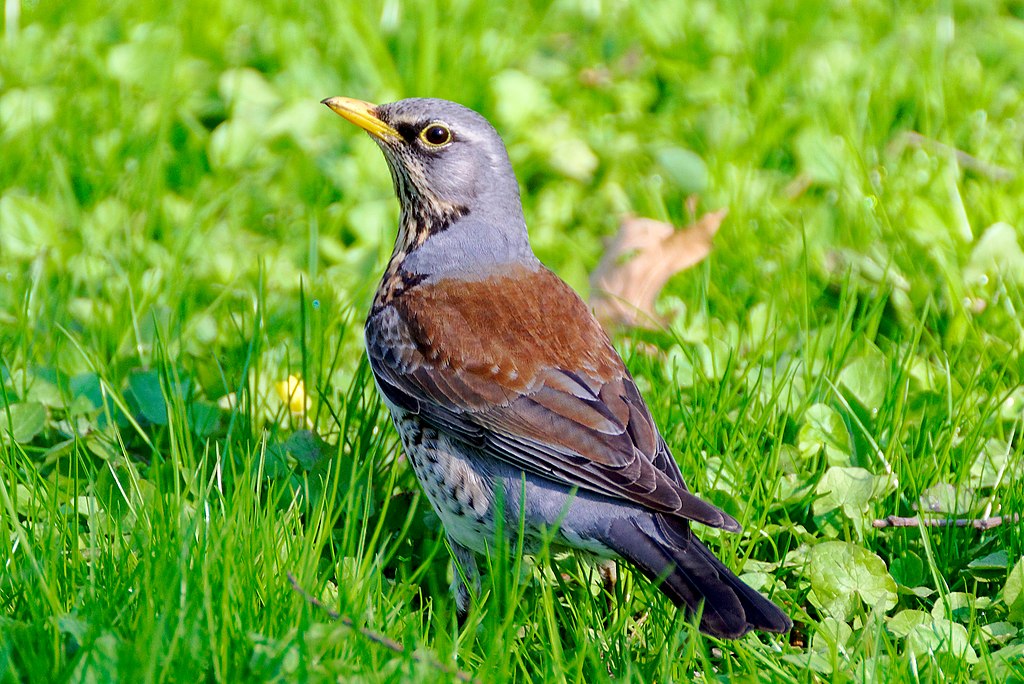
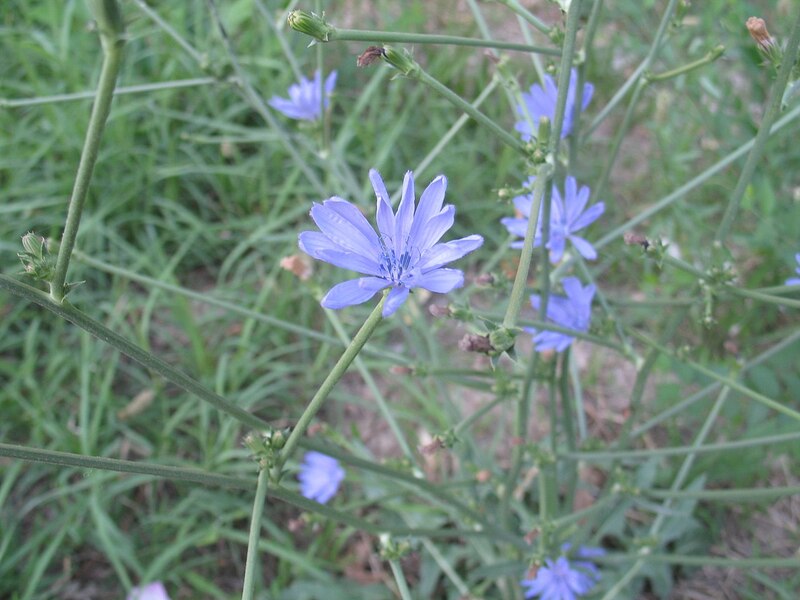
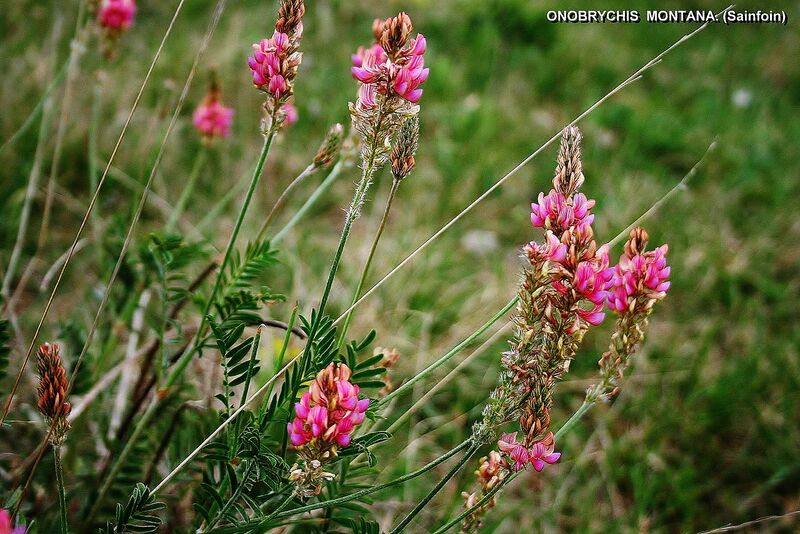
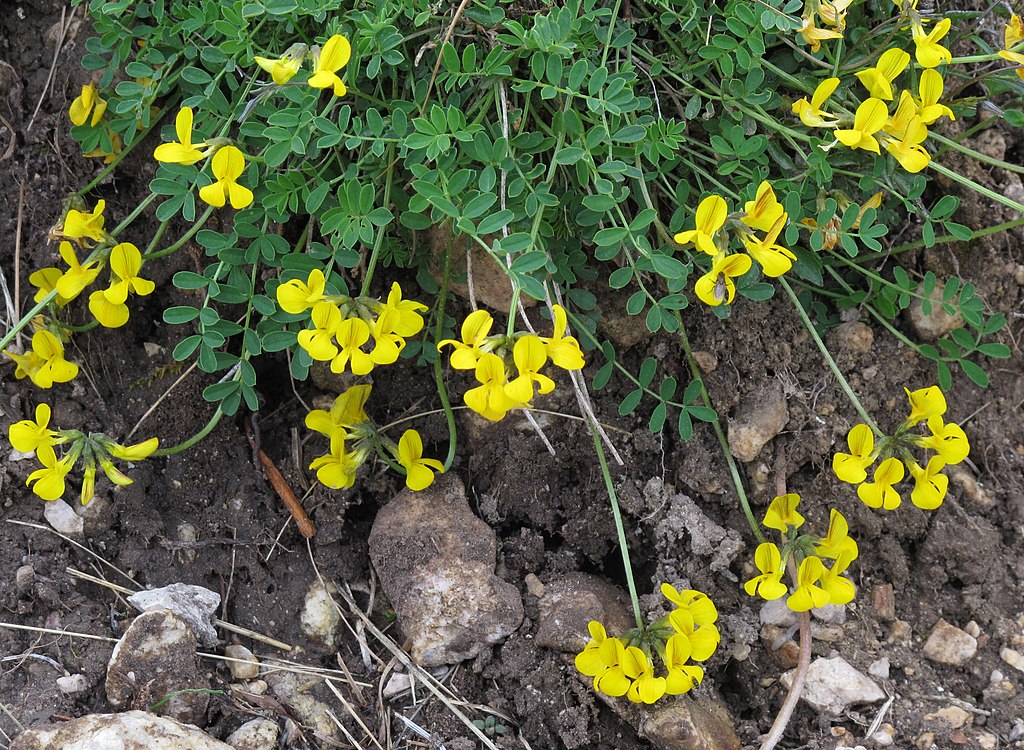

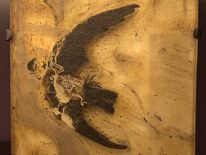

 RSS Feed
RSS Feed